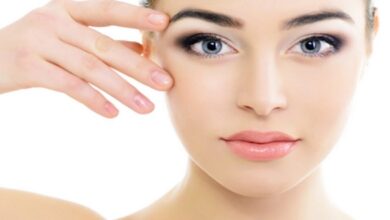
Knowing your skin type is the very first step in proper skin care. Treatments that work perfectly for one type may be disastrous for another. We are all born with a specific skin type and there is no way to change it in line with our preferences! However, it is definitely possible to maintain a flawless, healthy and glowing complexion no matter which skin type you have. To achieve this, it is important to know which skin type you belong to.
he 5 Skin Types
Your skin falls into one of these five categories- Normal, Oily, Dry, Sensitive and Combination. Each of these has its own unique characteristics that should be factored in before starting any skin treatment regimen. Let’s learn more about each type:
Normal Skin– Normal skin feels elastic and looks vibrant and fresh at all times. People with normal skin should consider themselves very lucky indeed. That’s because this skin type makes for very few or no breakouts, is not too dry or oily and does not have any marks or blemishes. Normal skin does not feel tight or dry with changes in the weather and have very little or no fine lines. The pores are small and quite invisible which means that a little foundation goes a long way.
It is mostly children who have normal skin. This skin type is often described as the ideal one since it is possible to keep it glowing and blemish free with relatively little effort even as your age advances. Normal skin ages best and looks glowing and youthful with little maintenance even as you grow older.
Dry Skin– In this skin type the pores are very fine. The skin feels tight and dry immediately after cleansing and may even be sensitive for some people. This is because the skin has a lack of sebum (oil). People with this skin type are most prone to developing wrinkles and red patches. The skin is also more likely to feel
flaky and to take on an unhealthy appearance because of dead cell buildup. Regular moisturizing, exfoliating and cleansing are a vital part of daily skin care for dry skin. Dry skin may not cause too many problems at young age but as you grow older, this skin type is likely to show the effects of aging much more prominently than others. Most problems with dry skin occur when the weather is cold. Special care is essential during winter months to avoid flaky skin and rashes.
Oily Skin– Oily skin has enlarged pores (think of the skin of an orange) and is prone to developing acne and other skin problems. The over production of oil by the sebaceous glands causes the skin pores to become blocked easily leading to spots as well as other skin blemishes. Oily skin looks greasy especially in certain areas of the face (the T zone). The good news is that the effects of ageing are not very evidently on oily skin. This kind of skin usually looks shiny and sometimes has a dull appearance
Combination Skin– Skincare experts believe that this is the most common skin type. Patches of dry and oily skin characterize this skin type. The cheeks and the area surrounding the eyes remain dry and oil free. The T zone, (forehead, nose and chin) is oily and greasy. This skin may also have expression lines. The challenge with this skin type is that the oily and dry parts need different kinds of treatment and care.
Sensitive Skin– This skin type usually is thin, has a fine texture and feels tight and dry. Special care is essential for people with this skin type since it gets irritated and inflamed very easily. Red patches, itchiness, tingling and spots are common problems with sensitive skin. This fragile skin type should only be exposed to skincare products that are selected with great care.




